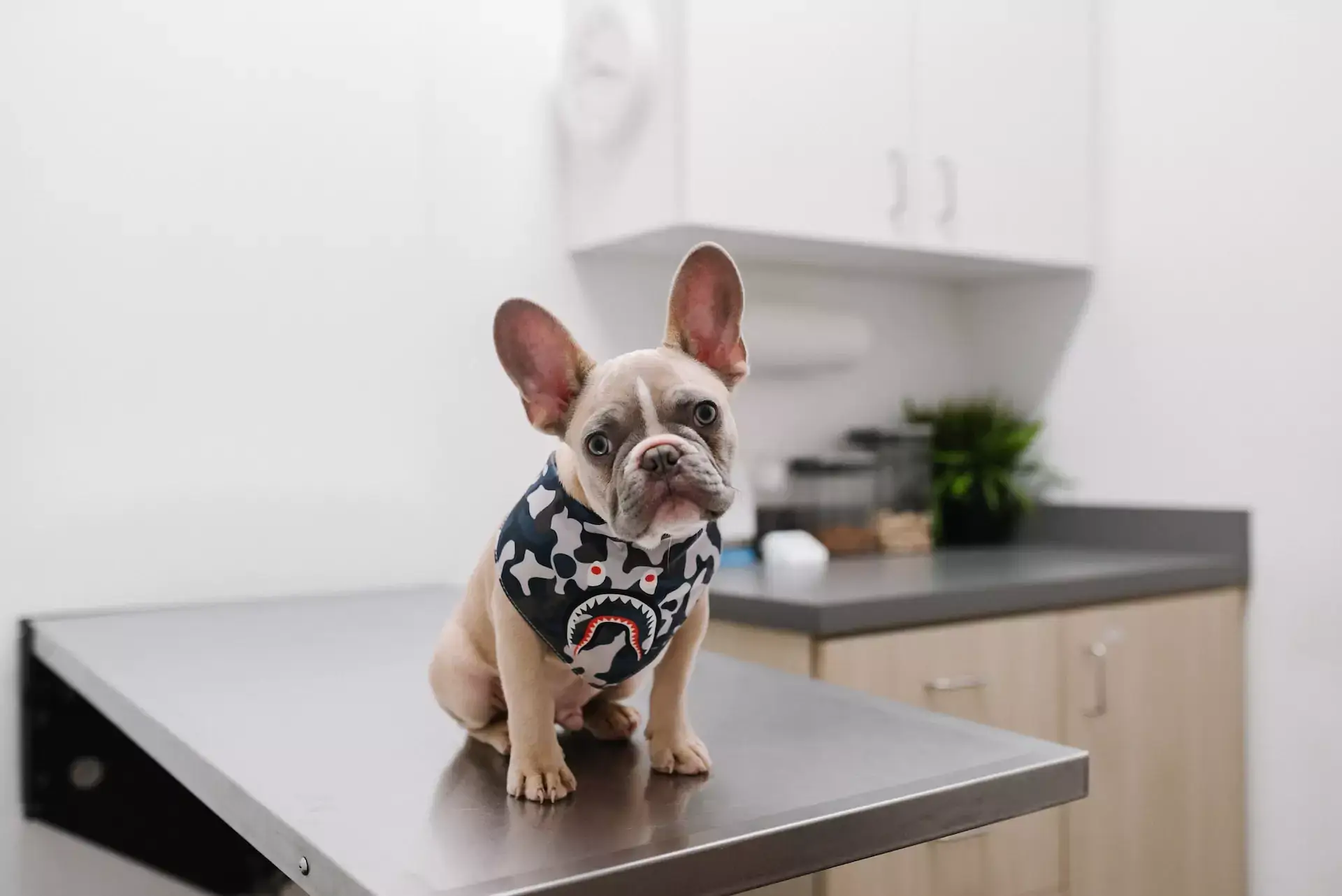One of the many good things about living in Georgia? We can enjoy swimming almost all year round. Swimming in a pool is an excellent way to cool off on a hot day. Many of our canine companions also like swimming. Of course, Fido will need training here: dogs, like people, must learn to swim. Continue reading for tips on teaching Fido to swim from a Gainesville, GA veterinarian.
Ask Your Vet If Your Pooch Should Swim
It’s no surprise that many puppies are good swimmers. Several of our canine companions were initially given swimming-related jobs. Many retrievers, for example, would bring ducks and other game to their rightful owners. Some dogs have webbed feet and slippery coats to help them do this. Some of the dogs who usually enjoy the water include the Brittany, Cocker Spaniel, and Schipperke.
While some puppies are naturals, this is not a guarantee. Even puppies who are normally excellent swimmers, such as Golden Retrievers, do not always take to the water like fluffy, barking ducks.
Most dogs can learn to conduct a basic doggy paddle or navigate in the water while wearing a flotation device. However, this does not mean they can swim safely. Puppies with long spines and/or small legs, such as Corgis and Dachshunds, may struggle to steer in water and might quickly become disoriented. Furthermore, Pomeranians and other toy breeds can drown in only a few inches of water. Brachycephalic puppies, such as bulldogs and pugs, are particularly susceptible to drowning due to their tiny airways. Furthermore, many large dogs and certain seniors are unsuited to the work. Ask your vet for more information.
Start While Fido Is Young
In general, four months is considered a suitable age. By that time, Fido has a solid understanding of how to use all of his legs and the essentials of doghood. This is also the time to take your animal partner on new excursions. If you wait too long, your dog may get afraid of the water. If Fido were any younger, he might not be able to swim properly.
Of course, if your puppy has any health difficulties, you should follow your veterinarian’s advice. Wait until little Fido has fully healed from being spayed or neutered.
Don’t Write Off Senior Dogs
Contrary to popular belief, an aging dog can be taught new tricks. Swimming is among these activities! Older canines can still swim safely. Swimming can be a great workout for senior dogs. As you may know, arthritis is common in older dogs. Swimming can help Fido get a terrific workout while also being gentle on his bones and joints. It’s also an excellent way to stay cool on hot summer days!
However, you do not want to push the issue. With older canines, you’ll need to take extra precautions. Senior dogs, for example, are more temperature-sensitive. They will also become weary sooner than younger pets. Consult your Gainesville, GA veterinarian for particular recommendations.
Buy Fido a Doggy Life Jacket
Start Fido off with a pet life jacket. This increases both buoyancy and stability. It is also a good idea to train your canine buddy to wear them for safety reasons. If you take him boating or camping near bodies of water, he will most likely need to wear one. This can also help him gain confidence in his ability to traverse the water.
To help your dog become used to his lifejacket, have him wear it around the house. Make sure it fits nicely! (Don’t forget to capture some cute pics!)
Pick The Right Location
You don’t want to throw Fido in the deep end and expect him to figure things out. That’s quite dangerous! Even if your dog learns to utilize the doggie paddle, the experience can be painful for him. He may develop a lifetime dread of water, as well as distrust in you.
You’ll want to go somewhere shallow and with a gentle slope. Going to a dog-friendly beach is fine.
Wait Until The Conditions Are Right
Choose a time when the water is at an appropriate temperature and smooth. If the water is too cold or turbulent, Fido may dislike it.
Prepare Your Pooch for Going Swimming
Take Fido for a short stroll before he swims. You need to warm him up a little, but you don’t want to go too far. Your canine companion should not be drained before his swim lesson!
Let Fido Take His Time
When you’re ready to dip your toes—or, more correctly, your pet’s paws—into the water, proceed with caution. Talk gently to Fido.
It’s best to just get into the water with your dog. Fido will feel safer if you are with him. You can also help him in the water by grabbing or grasping the handle of his canine life jacket.
Normally, we propose employing sweets (treats) to motivate trainees. In this case, however, you should stick with praise and comments until your canine student’s four paws are back on solid ground.
After the lesson, clean Fido off with water to remove any salt, sand, or chlorine from his fur.
After swimming, your canine friend’s paws will be extremely fragile. When dogs’ toe beans get wet, they become delicate and wrinkly, much like our skin. When your dog runs on hot or abrasive surfaces like sand or pool decks, he may get painful blisters and abrasions. Stick to soft ground.
Pool Safety Tips For Dog Owners
If you have a pool or are taking Fido to visit someone who does, you must take extra precautions.
The first thing you should do is show your dog the steps. This is vital! You want to make sure your pup can get out again if he slips in. If Fido slipped in while no one was looking, it could save his life! You want to be certain that the information fully sinks in, so take your time with this training and put your pet to the test. You could also want to post a visible sign, such as a life buoy, near the pool stairs.
Something more to think about in terms of pools? The swimming pool cover. Fabric covers may not be capable of supporting Fido’s weight. Unfortunately, your pup may confuse it for a solid surface and rush onto it. This may be quite harmful. Take precautions and keep the pool walled off while not in use.
The most important thing is to never let your dog near water unattended. Even well-trained canine swimmers can worry if they slip into the water by accident. Always keep a watchful eye on your pet when he is in or near the water.
Conclusion: Swimming can be fun and healthy for our canine companions, but it’s important to put your pet’s safety first. Not all dogs are cut out for swimming. Even among breeds with a natural affinity for water, some pooches just won’t like it. Taking every safety precaution, such as using a doggy lifejacket and sticking to shallow water, will help your furry bestie learn to navigate the water safely.
Book an Appointment at Your Gainesville, GA Animal Clinic
Do you have any worries about your dog’s health and care? Please contact your local Gainesville, GA pet hospital at any time. We are dedicated to giving great care!







!Social Media Icons